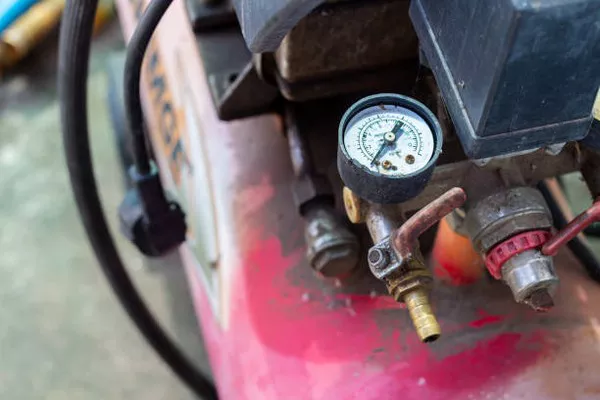Air compressors play a vital role in various industries and household applications, providing a convenient and efficient way to power pneumatic tools and inflate tires. However, when your air compressor refuses to turn on, it can be frustrating and potentially disrupt your work or projects. In this article, we’ll explore the common reasons why your air compressor may not be turning on and provide practical troubleshooting steps to help you identify and resolve the issue.
Power Supply Issues
The first and most basic step in troubleshooting an air compressor that won’t turn on is to check the power supply. Ensure that the compressor is properly plugged into a functioning electrical outlet. If the outlet is controlled by a switch, make sure the switch is turned on. Additionally, inspect the power cord for any visible damage or fraying.
If the power supply appears to be in good condition, use a multimeter to check the outlet’s voltage. Air compressors typically require a specific voltage to operate correctly, so ensure that the outlet matches the compressor’s voltage requirements.
Pressure Switch Problems
The pressure switch is a crucial component that regulates the air compressor’s operation by turning it on and off based on the air pressure in the tank. If the pressure switch is faulty or misadjusted, it can prevent the compressor from turning on.
To troubleshoot the pressure switch, start by inspecting its settings. Refer to your air compressor’s manual to determine the correct pressure settings for your specific model. Adjust the pressure switch accordingly and check if the compressor starts functioning.
If adjusting the pressure switch does not resolve the issue, the switch itself may be faulty and require replacement. Consult your compressor’s manual or contact the manufacturer for guidance on replacing the pressure switch.
Motor Issues
The motor is the heart of the air compressor, responsible for converting electrical energy into mechanical energy to power the compressor pump. If the motor is malfunctioning, it can lead to the compressor not turning on.
Check for any signs of motor damage, such as burned smells or unusual noises. If the motor appears damaged, it may need to be repaired or replaced by a qualified technician.
Another common motor-related issue is a capacitor failure. The capacitor provides the initial boost of power to start the motor. If the capacitor is faulty, the motor may struggle to start or fail altogether. A visual inspection can reveal bulging or leaking capacitors, indicating a need for replacement.
Thermal Overload Protection
Most modern air compressors come equipped with thermal overload protection to prevent the motor from overheating. If the compressor is subjected to heavy use or operates in a hot environment, the thermal overload protection may trip, preventing the motor from turning on.
Allow the compressor to cool down for an extended period, as outlined in the manual, before attempting to restart it. If the problem persists, there may be an issue with the thermal overload protection system itself, and professional assistance may be necessary.
Air Tank Pressure
The air tank pressure plays a crucial role in the compressor’s operation. If the tank pressure is too low or too high, it can impact the compressor’s ability to start.
Check the tank pressure gauge and ensure it falls within the recommended range specified in the manual. If the pressure is too low, the compressor may not turn on. Conversely, excessive pressure can trigger the pressure switch to shut off the compressor.
Adjust the pressure regulator to achieve the optimal tank pressure, and attempt to restart the compressor. If the issue persists, consult the manual for guidance or seek assistance from a professional.
Faulty Start Capacitor
Air compressors with electric motors often rely on start capacitors to provide the necessary boost during the startup process. If the start capacitor is faulty, the motor may struggle to initiate, leading to a failure to turn on.
To check the start capacitor, visually inspect it for any signs of damage, such as swelling or leaking. If the capacitor appears damaged, it should be replaced with a compatible and properly rated capacitor. Keep in mind that handling capacitors can be dangerous, and it’s advisable to seek professional assistance if you are not familiar with the process.
See Also How Much Does A Compressor Weigh? A Comprehensive Guide
Conclusion
A non-operational air compressor can be a source of frustration, but identifying and addressing the underlying issues can restore its functionality. By systematically troubleshooting the power supply, pressure switch, motor, thermal overload protection, air tank pressure, and start capacitor, you can diagnose the problem and take appropriate steps to rectify it. Regular maintenance and adherence to the manufacturer’s guidelines can help prevent issues and ensure the reliable performance of your air compressor over time. If troubleshooting steps do not resolve the problem, it is recommended to consult the manufacturer’s customer support or seek assistance from a qualified technician to ensure a safe and effective resolution.

